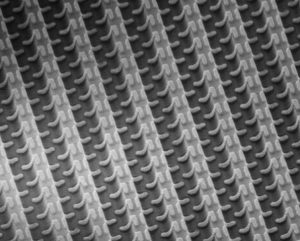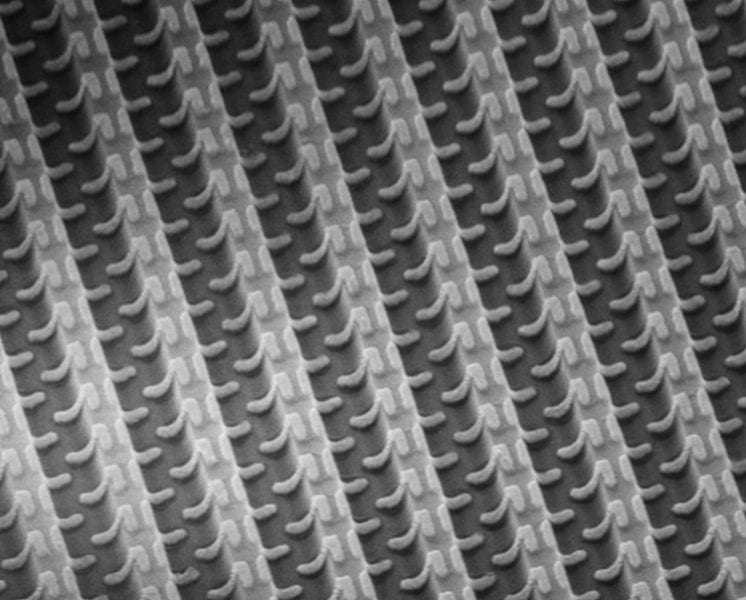The pursuit for novel materials with fascinating and unprecedented optical properties has continued apace in recent years by way of theoretical, experimental, and nanotechnological developments. Chiral nanomaterials represent a significant class of materials, important in developing areas of nanoplasmonics. Chiral nanostructures are usually fabricated by bottom-up (involving growth and self-assembly by chemical approaches) or top-down lithography-based methods.
 Kay Dietrich and colleagues from the Friedrich-Schiller Universität in Jena, Germany have developed a new fabrication method called “on-edge lithography”, in which nanostructures are attached to edged pre-structured templates. This novel technique embodies a deterministic, 3D, high-resolution, large-scale, and highly versatile nanolithography method and is capable of producing chiral nanomaterials in an efficient, accurate, and reproducible manner. This use of this technique is reported in a recent article published in the Advanced Optical Materials section of Advanced materials: “Circular Dichroism from Chiral Nanomaterial Fabricated by On-Edge Lithography”. Simulations and optical-transmission studies of a chiral, nanostructured material fabricated by this new lithographic method are also discussed.
Kay Dietrich and colleagues from the Friedrich-Schiller Universität in Jena, Germany have developed a new fabrication method called “on-edge lithography”, in which nanostructures are attached to edged pre-structured templates. This novel technique embodies a deterministic, 3D, high-resolution, large-scale, and highly versatile nanolithography method and is capable of producing chiral nanomaterials in an efficient, accurate, and reproducible manner. This use of this technique is reported in a recent article published in the Advanced Optical Materials section of Advanced materials: “Circular Dichroism from Chiral Nanomaterial Fabricated by On-Edge Lithography”. Simulations and optical-transmission studies of a chiral, nanostructured material fabricated by this new lithographic method are also discussed.
The research was reported in Advanced Optical Materials, a new section in Advanced Materials dedicated to breakthrough discoveries and fundamental research in photonics, plasmonics, metamaterials, and more, covering all aspects of light-matter interactions. To get Advanced Optical Materials email alerts click here. Advanced Optical Materials will start as an independent journal in 2013. More information can be found on www.advopticalmat.de.

















